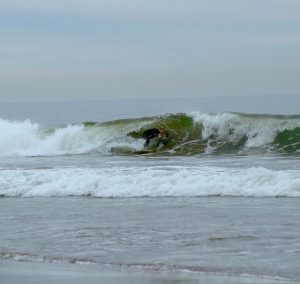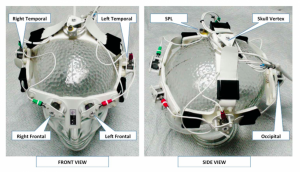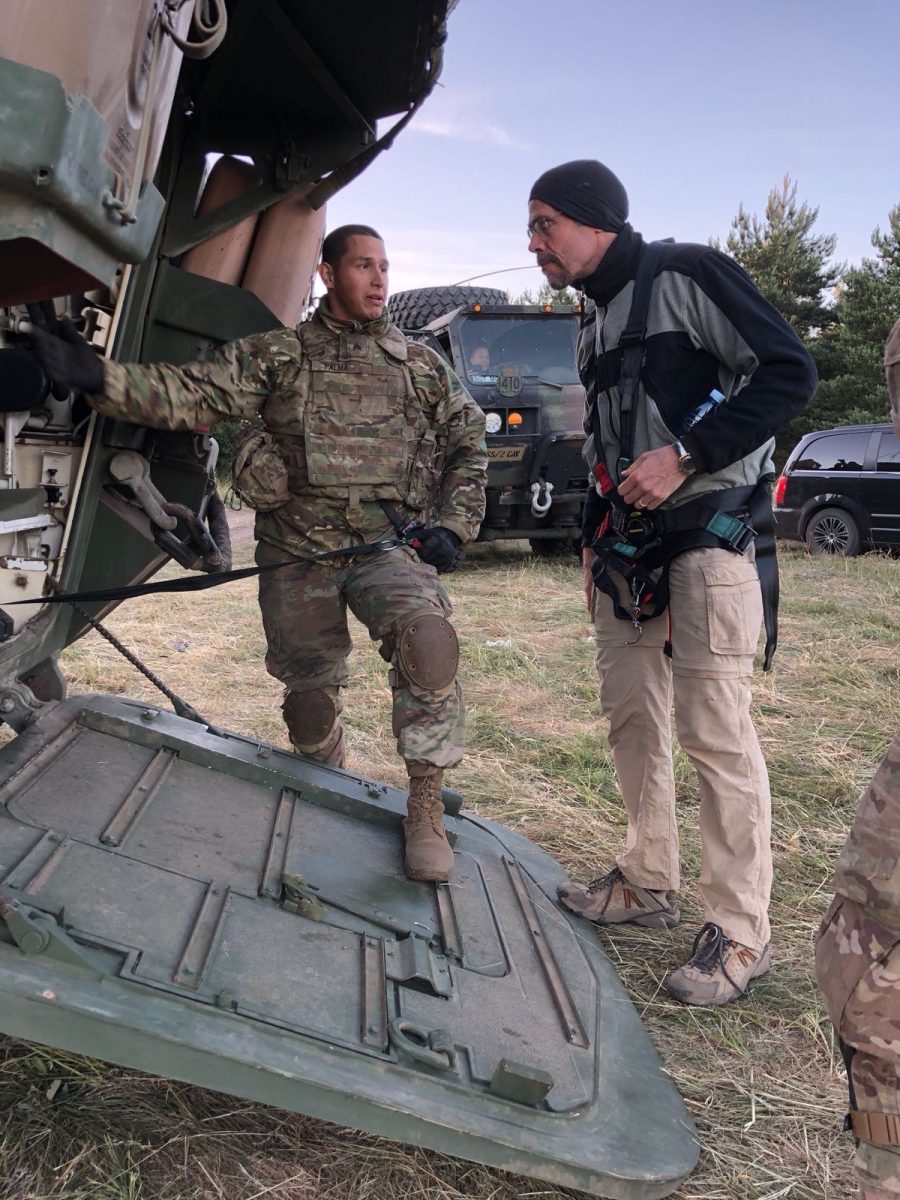While surfing at Stinson Beach two weeks ago, junior Cale Smith was hit in the head by his board. Though at the time he thought it was just a minor injury, the hit turned out to be serious.

Cale said that after he was hit his head started bleeding and he felt extremely dizzy. He stumbled to a nearby lifeguard tower, where he was given some ice.
“My friend, who was getting his board at the time of my [injury], came up to me and he told me to quit being a [wimp],” Cale said. “Thinking it was nothing serious, I listened to him and we surfed for another six hours.”
Cale added that, initially, he didn’t feel any harsh symptoms of a concussion beside dizziness, which he thought was partly due to the cold temperature of the ocean.
“I think that the water was cold enough that it was like an ice pack on my head for the next couple hours, so I think that kept down the swelling,” Cale said. “However, when I drove home, I was having a rough time driving and and almost falling asleep.”
Three days later, after being pressured by his mother’s co workers at Kaiser Permanente, Cale finally went to the doctor and was diagnosed with a concussion.
According to Dr. Wade Smith, a neurologist at the University of San Francisco, a concussion is a clinical syndrome in which a person, after a sudden impact to the head, develops a variety of symptoms that can last from a few hours to days to weeks. Typically, symptoms include confusion, poor memory, a sense of dizziness, nausea, and/or imbalance.
Wade explained that upon impact, the brain slams against the skull without the cushioning of the cerebral fluid.
“We think it’s the brain bouncing around inside the skull that leads to the syndrome,” Wade said.
Concussions are especially common in sports like football, volleyball, soccer, and lacrosse, according to Wade. Anything where there’s high-speed running that can be stopped by hitting someone else or by hitting a solid object puts its players at risk for concussion.
“Pretty much every high school [athlete] is at risk [for concussions], perhaps with the exception of chess,” Wade said.
While sports are one of the top causes of concussions among teenagers, they are not the only activities that can potentially lead to this injury.
Wade said that any sort of head injury, regardless of if it came from playing sports, can cause a concussions. For instance, a concussion could be caused by whiplash from car accidents, altercations from fights, or even just landing on a trampoline the wrong way.
“We’re not entirely sure [how concussions affect teenagers], but we’re pretty sure that if you have repetitive concussions, they can lead to poor cognitive skills down the road,” Wade said. “We’re just beginning to see the neuropathology of this in older people who have had a lot of sports– related concussions.”
There is a deposition of protein that [Wade and his colleagues] see in the brain called TAU [which stabilizes microtubules.] This protein is being seen in patients with Chronic Traumatic Encephalopathy or CTE.
Wade believes that concussions are being diagnosed more frequently now because there’s a greater public awareness about them, especially in the sports world.
“It’s likely now that concussions have been around for a long time, but because of the lack of interest in them, [athletes] wouldn’t tell their coach or their coach wouldn’t detect it,” said Wade.
What is most concerning to Wade is how athletes with concussions continue to play.
“If you’re playing football and you’re the star quarterback, the last thing you are going to want to do is not play, so the quarterback is probably not all that motivated to tell his coach that he has these sudden symptoms,” Wade said. “It could be too that the coach might want to play his star player and put a person back into the game before it’s safe. Both of those things conspire, we think, to cause more injuries in student athletes.”
While Wade explained that CTE hasn’t been seen in younger athletes, he says that there have been some extreme cases in professional sports such as the NFL.
“We’re seeing [CTE] in a lot of NFL players, some who have actually bequeathed their brains for science after they have died,” Wade said. “Some have actually committed suicide as part of the depression that comes along with [CTE].”
Wade referred to former NFL player Dave Duerson, who committed suicide while suffering from CTE. Duerson shot himself in the chest in order to preserve his brain for scientific research.
“We think that the consequences of [concussions] in the long term could lead to dementia and poor ability to concentrate, think and remember,” Wade said. “We’re not really sure what the impact of a single concussion is on a person, but it’s the repetitive concussion thing is the thing that’s most concerning to neurologists.”
Advancements in concussion detection are on the horizon, according to Wade.

“We are probably soon going to get FDA approval of a new medical device that allows us to measure brain motion and response to the heartbeat,” Wade said. “We believe that gives us a measure of whether or not someone’s had a concussion or not.”
According to Wade, the device will allow doctors to know whether somebody has actually had a concussion, whether it be in the past few days or even perhaps in the past few weeks.
“[The device] will be helpful, we think, for deciding when it will be safe to go back onto the field again,” Wade said.
One of the components that Smith and his colleagues are testing is whether going back to exercising too soon after a concussion effectively causes another concussion.
“Our hope is that we can come up with a device that would at least let the coach and the player both feel comfortable that it’s safe for their child to go back and play,” Wade said. “Perhaps more importantly, [we hope] to reduce the anxiety of their parents who are deciding whether it is safe for their children to go back.”
Wade explained that while the device isn’t available to the general public yet, if it does turn out to work, then it will be very cheap and simple to use. In addition, he says that it is too early for him to say exactly who the device will be tested on because the device hasn’t been proved effective yet.

















